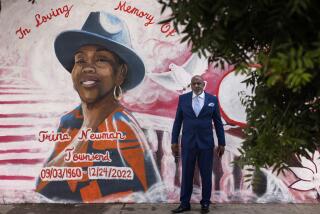Record Low in U.S. Highway Death Rate Seen
- Share via
WASHINGTON — The nation’s 1992 highway death rate will be the lowest ever recorded, largely because Americans are buckling up more and drinking less before sliding behind the wheel, Transportation Secretary Andrew H. Card Jr. announced Tuesday.
“We’re talking about the lowest fatality rate in history,” said Marion Blakey, administrator of the National Highway Traffic Safety Administration. “It’s something we all should celebrate.”
In California, the figures are even better, with the death rate running about 11% below the national level, according to preliminary figures released by the California Highway Patrol.
The remarkable decline in the national death rate, which is based on the number of people killed in traffic accidents adjusted for miles of road traveled, also means that the actual number of Americans expected to die on the nation’s highways will dip below 40,000 for the first time in 30 years.
“There truly has been a sea change for the better when it comes to seat belts,” Card said. He cited surveys showing that 62% of Americans now fasten their belts when they get into their cars, up from 10% in 1982.
Card also noted that the percentage of alcohol-related traffic deaths nationwide declined to 45.8% in 1992 from 57.3% a decade ago.
When the year ends at midnight Thursday, Card said, the 1992 traffic fatality rate will stand at 1.8 Americans dead for every 100 million vehicle-miles traveled.
That figure is down from 1.9 deaths last year, and 2.8 in 1982. And it is the lowest on record since federal officials began tracking highway death rates back in 1921.
The 39,500 people expected to die on the nation’s highways this year represents a 5% decline from the 41,462 deaths in 1991, and is the lowest since 1962.
In California, the traffic fatality rate for 1992 will come in at about 1.6 deaths per 100 million miles traveled, said CHP Lt. Greg Manuel.
“When you talk about lives, it’s quite a bit below the national figure,” Manuel said. “And because there are so many drivers in California, it helps to pull down the nation’s number too.”
Manuel attributed much of the decline to the Legislature’s decision in 1985 to lower the permissible blood alcohol level in drivers from 0.10% to 0.08%, and to the state’s mandatory seat belt law. California is one of 14 states whose residents use seat belts 70% or more of the time, according to state surveys.
More to Read
Sign up for Essential California
The most important California stories and recommendations in your inbox every morning.
You may occasionally receive promotional content from the Los Angeles Times.













